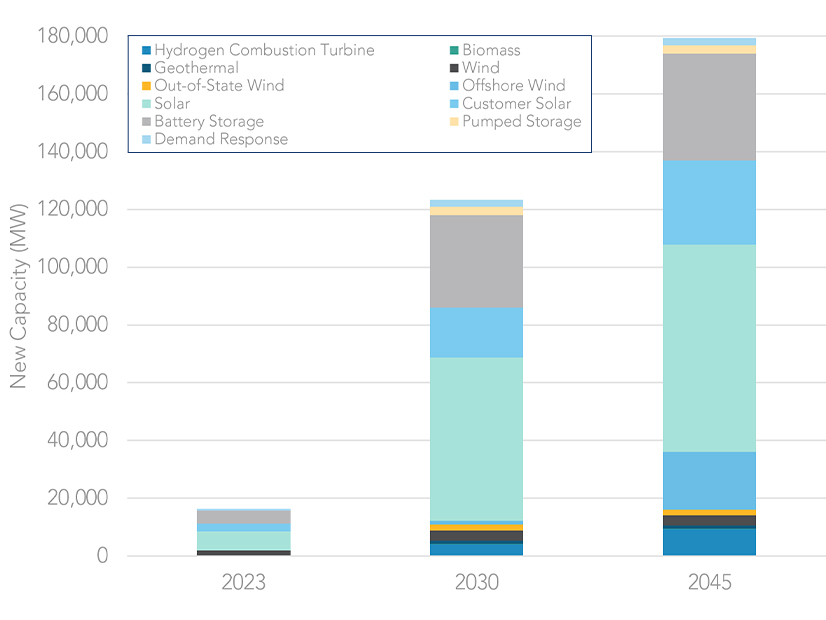The California Air Resources Board on Thursday approved a climate change scoping plan that charts a course for the state to achieve carbon neutrality by 2045.
The plan aims to slash greenhouse gas emissions to 85% below 1990 levels by 2045.
Its goal is to shift the state away from dependence on petroleum and natural gas to clean and renewable energy and zero-emission vehicles. It envisions an 86% drop in demand for all fossil fuels by 2045, with a 94% drop in demand for oil.
“Implementing this plan will achieve deep decarbonization of our entire economy, protect public health, provide a solid foundation for continued economic growth, and drastically reduce the state’s dependence on fossil fuel combustion,” CARB Chair Liane Randolph said in a statement.
The board’s vote was the final approval for the plan, which has been in the works for two years. State law requires a scoping plan update every five years. The previous scoping plan was adopted in 2017.
The 2022 scoping plan involves an “unprecedented deployment of clean technology,” CARB staff said.
By 2045, the plan envisions a 37-fold increase in the number of zero-emission vehicles on the road in California and a six-fold increase in residential electric appliances. Electricity generation would nearly double, with a four-fold increase in installed wind and solar capacity. The state’s hydrogen supply would grow to about 1,700 times the size of the current supply.
The plan incorporates Gov. Gavin Newsom’s goals of developing 20 GW of offshore wind by 2045 and meeting the increased demand for electricity without new gas-fired plants. (See Calif. Boosts Offshore Wind Goals.)
In addition to the 2045 carbon neutrality goal, the scoping plan includes a 2030 target of reducing GHG emissions to 48% below 1990 levels. That exceeds a statutory goal of a 40% emissions reduction by 2030.
CARB staff described the years leading up to 2030 as “the decade of action.” That will include speeding up construction of clean energy infrastructure and deployment of clean technology.
“Planning on a longer time frame for the new carbon neutrality target means California must accelerate near-term ambition for 2030 in order to be on track to achieve the longer-term AB 1279 target,” the board said in a resolution approving the plan.
AB 1279, which Newsom signed into law in September, sets a state policy to achieve net zero greenhouse gas emissions “as soon as possible, but no later than 2045.” The bill also sets an 85% emissions reduction target by 2045.
The 2022 scoping plan includes for the first time a detailed plan for natural and working lands, which play a role in storing carbon but also release emissions through wildfires. The plan calls for a 10-fold increase in fuel reduction and restoration of forests, shrublands and grasslands. Another goal is to establish defensible space — clearings that protect buildings from wildfires — on 46,000 properties per year. The plan aims for a 10% reduction in wildfire emissions by 2045.
Even with significant emission reductions from a broad range of sources, some GHG emissions will remain in 2045, CARB said. To address those remaining emissions, the scoping plan calls for using mechanical methods to remove CO2 from the atmosphere and storing it.
Implementation of the scoping plan will involve the adoption of new regulations and strengthening of existing rules. CARB plans to coordinate with other state agencies, as well as local governments, on meeting the plan’s goals.

